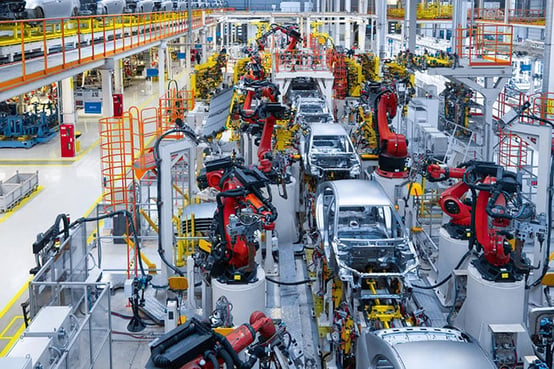What the Worldwide Shortage of Semiconductor Chips is REALLY Teaching Us
March 1, 2021
Dionis Teshler
CTO & Co-Founder
.jpg)
Hint: It’s all about the supply chain and the need for rapid change!
A shortage of microchips worth under one dollar are currently stopping billion dollar automotive production lines. Following the downturn effects of the pandemic in 2020, it seemed to make sense for carmakers to expect a slowdown in demand and to plan their supply chain purchases accordingly. No one was expecting demand to increase as quickly as it has, and automakers have been left in the lurch due to a global automotive semiconductor chip shortage.
Some analysts expect this shortage to last until 2023, putting pressure on carmakers for whom semiconductors are a crucial component without which they simply cannot build cars. The shortage itself stems from standard supply and demand principles - other industries increased their orders of semiconductors while the automotive industry decreased theirs. Now that the automotive industry is starting to rebound, demand is increasing again but it will take time for the supply to balance out.
 iStock.com/Traimak_Ivan
iStock.com/Traimak_Ivan
What sounds like an easy issue to fix - just produce more semiconductors - is difficult because semiconductor manufacturing cannot just happen overnight. The ripple effect of the shortage is making serious waves across the industry. VW, forced to reduce production lines in Germany, is even considering a lawsuit against suppliers, claiming that they are responsible for not ordering enough parts to meet their own delivery obligations. The German government is stepping in, both to encourage increased production of semiconductors in Germany itself and to pressure the Taiwanese government to step up production from their side.
The main lesson to be learned from this situation is the urgent need to update the traditional supply chain in the automotive industry. It’s time to abandon the “just-in-time” model which clearly is no longer sufficient, and look to a new system incorporating new players who can better help OEMs meet the demands of consumers.
How Did the Automotive Industry Get Here?
There is no excuse why, in 2021, the automotive industry should grind to a halt due to an automotive semiconductor chip shortage. The reason why it did happen is because the 100-year old supply chain that the industry relies on is outdated and fraught with challenges.
Continuous advances in technology mean industries need to evolve with the changes or risk being left behind. The automotive industry may not have history as an early adopter of technology or new methods, but now is the time for it to focus on growth and evolving with the needs and demands of customers. In much the same way that the smartphone caused a revolution in its industry, a paradigm shift is happening in the automotive industry and the supply chain just might be the weakest link.
According to Continental, one of the major auto part suppliers, the reason for the current automotive semiconductor chip shortage is simply that the global supply chain was unable to scale up in time to meet unexpected growth in demand. This lack of agility ultimately puts the entire auto manufacturing sector at risk, and given its size relative to the economy as a whole, can have a much wider impact.
So how can the industry re-think the supply chain?
Transition to a flexible supply chain
The current automotive supply chain is far from flexible. Suppliers are selected in a lengthy and cost intensive process to source the cheapest supplier capable of delivering the end product in the necessary performance and quality. This process has two phases, until winning the business, the OEM is king, after winning the business the supplier is king. This is due to the fact that once an engagement was made it is very hard to terminate without missing critical deadlines in vehicle development. Even if two suppliers are selected, the same problem remains.
After the start of development, every change request requires a lengthy process to approve, as suppliers are attempting to increase the impact of the change (due to financial and risk considerations) and the OEMs are trying to downplay the change (to reduce costs). This leads to a very inflexible process. This is made worse by the fact that introducing additional suppliers or specialized suppliers to solve a particular issue, is almost impossible. This is true for software level changes, and even more so for hardware level changes.
As long as this process remains in place smaller suppliers who can be more innovative, more flexible and provide creative solution are prohibited from receiving both the initial project award, nor from being onboarded when a change is needed.
The Importance of the Cybertech Tier
A new class of suppliers is emerging in the market who intend to evolve the traditional supply chain into the new generation of automotive. Cybertech Tier suppliers are first and foremost technology companies, aiming to provide best in class technological solutions with high efficiency and short time to market.
Coupling both innovative engineering with state of the art agile development methodologies, Cybertech Tier suppliers aim to decrease the cycle time (and eventual introduction into the field) of changes from 3-6 month to 3-6 weeks. This approach will dramatically change the way the capabilities and features are delivered to vehicle users.
If we consider risk mitigation and disaster recovery, Cybertech Tier suppliers will provide OEMs with a whole new arsenal of possibilities to quickly, efficiently introduce changes into the field without impacting quality.





